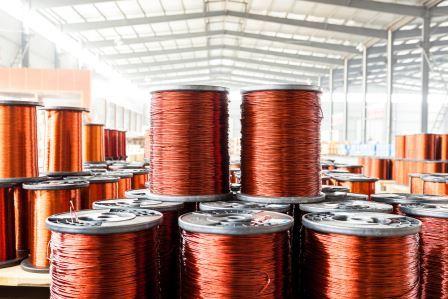 After posting a loss of 12 percent in 2018, copper started the year with straight three weeks of gains. Optimism that the US and China are close to resolve their enduring trade dispute spurred expectations that demand for base metals from the world’s top base metal consumer, China may improve. Supply disruptions in world’s largest producer, Chile too supported the short-term fundamentals.
After posting a loss of 12 percent in 2018, copper started the year with straight three weeks of gains. Optimism that the US and China are close to resolve their enduring trade dispute spurred expectations that demand for base metals from the world’s top base metal consumer, China may improve. Supply disruptions in world’s largest producer, Chile too supported the short-term fundamentals.
Prospect of feeble Chinese demand and moderate global economic growth outlook had an impact on copper prices in 2018. Trade dispute between the US and China and a strong dollar weighed on the sentiments. In the benchmark LME, prices nosedived from a six-and-a-half year high of USD 2685 a tonne to two-year low of USD 1876 by end of last year. Indian futures prices too followed suit.
At the same time, global copper market was in a deficit last year. As per International Copper Study Group’s bulletin, in the first ten months of 2018 world copper market was at a deficit of 5.47 lakhs tonnes compared with 2.24 lakhs tonnes of deficit same period previous year. Though global supply was almost steady, overall growth was partially offset by weak output from Canada, US and India.
Asia is the key driver of global refined copper usage, especially from China, Japan, Korea and India where demand has expanded almost eight-fold over the past four decades. Copper is an inevitable commodity in industries like electrical, industrial and transportation sectors.
China, the world’s top copper consumer accounts about half of global consumption. The trade dispute with the US has put strains on Chinese economy, resulting in faltering domestic demand, there by pressuring copper prices.
In 2018, Chinese growth rates plummeted to 28 years lows. The country posted a full year growth of 6.6 percent in 2018 its slowest annual pace since 1990. The fourth quarter GDP has also declined to 6.4 percent, its weakest pace since the global financial crisis. Meanwhile, there are some reports says actual growth in China is weaker than their official data.
Weakness in broad areas of Chinese economy has seen along with GDP despite a raft of policy easing steps taken by the country. Though, where was an unexpected rise in factory output and increase in service sector, investment and retail sales continued to languish in December. Car sales in China, the world’s biggest car market shrunk for the first time since 1990s last year hinting cooling of economic activity in the country.
Signs of escalating weakness in China fueling worries about risks to the global economy as well. Recently, IMF cut its global growth forecast for a second time in row. IMF predicts global growth rate would be 3.5 percent for 2019 and 3.6 percent for 2020, lower than its earlier forecast in October.
However, there are expectations that more economic stimulus measures from Chinese policymakers to reduce the risk of massive job losses and revive economic growth. More infrastructure spending would lift the economic momentum and raise the demand for copper.
Looking ahead, present economic conditions in China is not painting a fair picture on base metals prospects, especially copper. A weak factory activity is suggesting that the economy will cool more quickly than expected. A positive outcome on the US-China trade discussions is likely to boost global economic activity and improve the demand for copper. More infrastructure spending from China and growth of other emerging markets are likely to boost the demand.
Posted: January 2019
First Published in Money Control Link.








